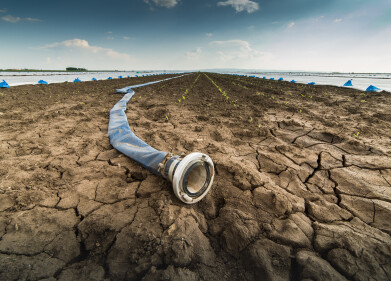Weather monitoring
Which extreme weather events are getting more frequent in a warmer Asia?
Aug 23 2024
Global warming is having a profound impact on weather patterns across Asia, resulting in more extreme and unpredictable conditions that are already causing significant disruption. As the planet warms, the frequency, intensity, and geographical distribution of extreme weather events are shifting, posing new challenges for the region.
One of the most striking changes driven by global warming is the intensification of tropical cyclones in Asia. Research indicates that these cyclones are now forming closer to coastlines, intensifying more rapidly, and lingering longer over land. This shift is particularly concerning for densely populated coastal cities such as Bangkok, Hai Phong, and Yangon, which are increasingly vulnerable to these more powerful storms. The rising sea surface temperatures in the Northwest Pacific, South China Sea, and Bay of Bengal are providing more energy for cyclones, leading to stronger winds, heavier rainfall, and more severe flooding when these storms make landfall.
For instance, studies show that the frequency of the most intense cyclones (Category 3-5) is increasing, with peak wind speeds and rainfall totals also on the rise. This trend is expected to continue, exacerbating the risk of damage and loss of life in vulnerable areas.
Global warming is also contributing to the increased occurrence of cloudbursts—sudden, intense rainfall events that can cause devastating floods and landslides. In South Asia, the warming of the Indian Ocean has led to more frequent and intense monsoons, with long dry spells suddenly interrupted by short bursts of heavy rainfall. This shift in rainfall patterns not only disrupts agriculture and water management systems but also increases the likelihood of landslides in hilly and mountainous regions, as seen in recent disasters in India’s Western Ghats.
These extreme weather events are becoming more common across the region, driven by the higher capacity of warmer air to hold moisture. When this moisture is eventually released, it can lead to record-breaking rainfall over short periods, overwhelming local drainage systems and causing catastrophic floods.
The warming trend is not limited to the atmosphere; oceans around Asia are heating up at a rapid pace as well. The North-Western Arabian Sea, the Philippine Sea, and seas east of Japan are warming at rates three times faster than the global average. This ocean warming contributes to the intensification of storms and has other far-reaching effects, including the melting of glaciers in the High Mountain Asia region and rising sea levels. These changes are exacerbating the risk of coastal flooding and erosion, threatening the livelihoods of millions of people in low-lying areas.
Overall, the evidence is clear that global warming is making Asia’s weather more extreme and unpredictable. The region is experiencing higher temperatures, more intense storms, and greater variability in precipitation, all of which are contributing to increased economic losses and human casualties. The World Meteorological Organization (WMO) has highlighted Asia as the world's most disaster-prone region, with more than 80% of the continent's catastrophe losses being uninsured, leaving millions vulnerable to the impacts of climate change.
Digital Edition
AET 28.4 Oct/Nov 2024
November 2024
Gas Detection - Go from lagging to leading: why investment in gas detection makes sense Air Monitoring - Swirl and vortex meters will aid green hydrogen production - Beyond the Stack: Emi...
View all digital editions
Events
Jan 12 2025 Abu Dhabi, UAE
Jan 14 2025 Abu Dhabi, UAE
Jan 20 2025 San Diego, CA, USA
Carrefour des Gestions Locales de L'eau
Jan 22 2025 Rennes, France
Safety, Health & Wellbeing LIVE
Jan 22 2025 Manchester, UK


_(4).jpg)
















